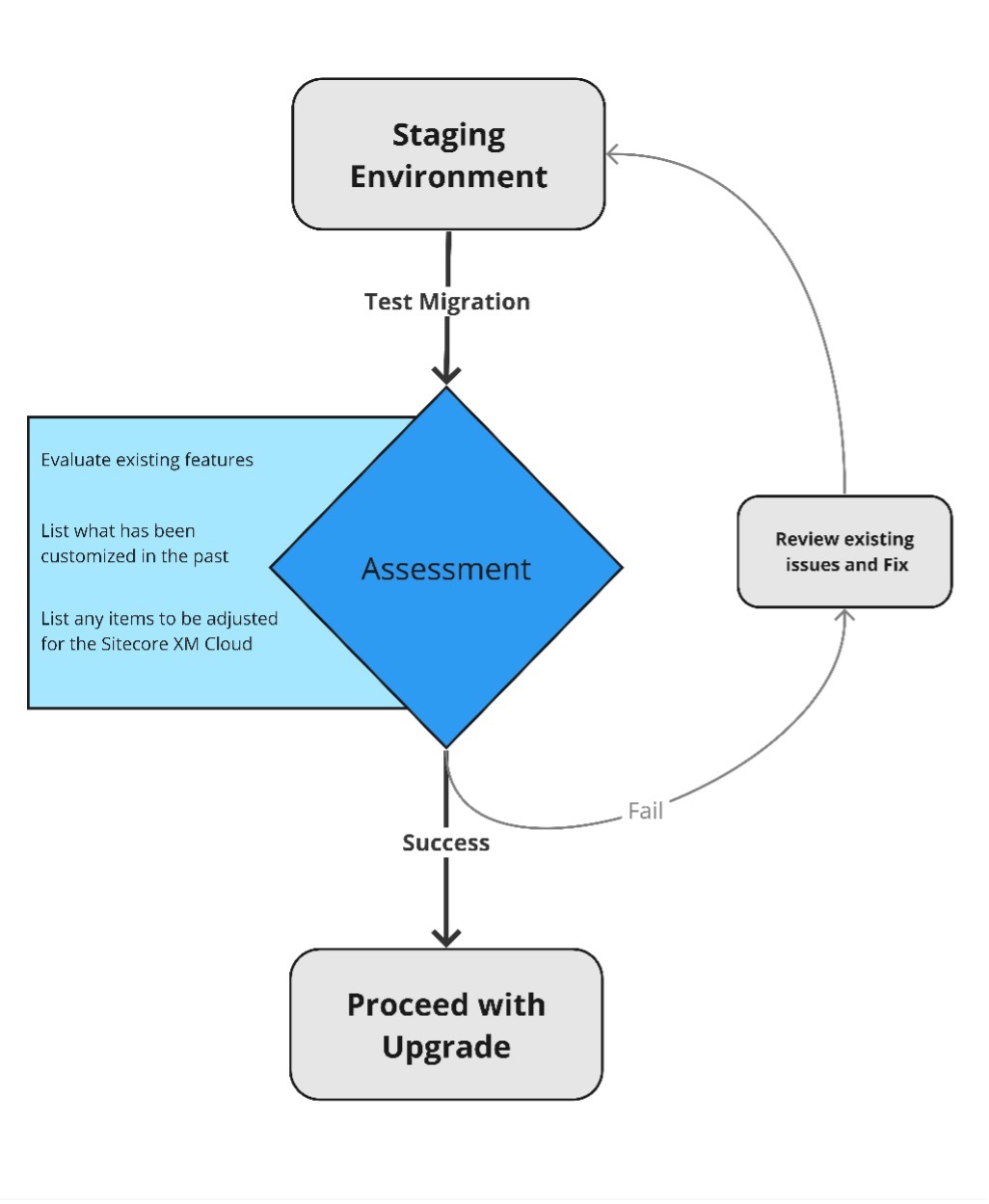A Comprehensive Guide to migrating from Sitecore XP to Sitecore XM Cloud
The introduction of Sitecore XM Cloud has been a game-changer in the content management system (CMS) arena. This headless, SaaS-based CMS has ignited conversations among developers, marketers, and decision-makers. The dilemma now is whether to continue with Sitecore XP or make the transition to XM Cloud. This article aims to provide an in-depth analysis and guide on making the shift from Sitecore XP to Sitecore XM Cloud.

The Evolution of Sitecore: XP to XM
Sitecore has been a leading player in the CMS market, and its XP versions have been the go-to solution for many organizations. However, with the extended support for versions like 9.0.1 to 9.3 until 2025, the question arises: Is it time to transition to XM Cloud?
Why XM Cloud is the Future
XM Cloud is not just another CMS; it's a future-proof platform designed for modern tech stacks. It offers several advantages over traditional Sitecore XP:
XM Cloud is engineered for high performance. Its architecture allows for rapid content delivery and management, thereby increasing productivity. One of the most compelling reasons to switch is the cost benefits. XM Cloud eliminates the need for infrastructure management, thereby reducing overhead costs. The headless nature of XM Cloud allows for greater flexibility in content management and delivery. It's designed to scale with your organization's needs. XM Cloud opens up a plethora of front-end development options, allowing you to choose the best technologies that fit your project requirements.
Planning Your Transition: A Step-by-Step Guide
Transitioning to XM Cloud is not a trivial task; it requires meticulous planning and re-architecture. Here's how to go about it:

Step 1: Conduct a System Audit
Begin by conducting a thorough audit of your existing Sitecore XP system. Identify the features you're currently using, the customizations you've made, and the data you need to migrate.
Step 2: Assemble a Cross-Functional Team
Assemble a team of experts, including developers, system architects, and business analysts. This team will be responsible for planning, executing, and monitoring the transition.
Step 3: Define Objectives and KPIs
Clearly define what you aim to achieve with the transition. Whether it's improved performance, cost-saving, or better scalability, having clear objectives will guide the transition process.
Step 4: Create a Migration Plan
Develop a detailed migration plan that outlines the steps to be taken, resources required, and a timeline. This plan will serve as the blueprint for the entire transition process.
Step 5: Choose the Right Tools
Select the tools that will help you migrate data, configurations, and customizations. Ensure these tools are compatible with both Sitecore XP and XM Cloud.
Step 6: Test the Migration
Before fully committing, perform a test migration on a staging environment. This will help you identify any issues that may arise during the actual migration.
Step 7: Execute the Migration
Once you're confident with the test results, proceed with the actual migration. Follow the migration plan meticulously and keep track of each step.
Step 8: Post-Migration Checks
After the migration is complete, conduct a series of checks to ensure that all data, features, and customizations have been successfully transferred.
Step 9: Train the Team
Train your team on how to use and manage Sitecore XM Cloud. This is crucial for leveraging the platform's full capabilities.
Step 10: Go Live and Monitor
Finally, take your new Sitecore XM Cloud system live. Continuously monitor its performance and make necessary adjustments to ensure it meets your objectives.
Prioritize Building on XM Cloud for Optimal Outcomes
The transition from Sitecore XP to XM Cloud is not just a technical upgrade; it's a strategic move that can redefine your organization's digital experience. While the transition requires planning and may involve re-architecture, the long-term benefits far outweigh the initial efforts. Therefore, prioritizing building on XM Cloud is the key to achieving optimal outcomes in your digital transformation journey.
By understanding the nuances of both platforms and following a structured transition plan, you can make an informed decision that aligns with your organization's goals and future-proof your CMS experience.
Author

Radek Zíma
Client Success Lead at ACTUM Digital. You can find me on LinkedIn